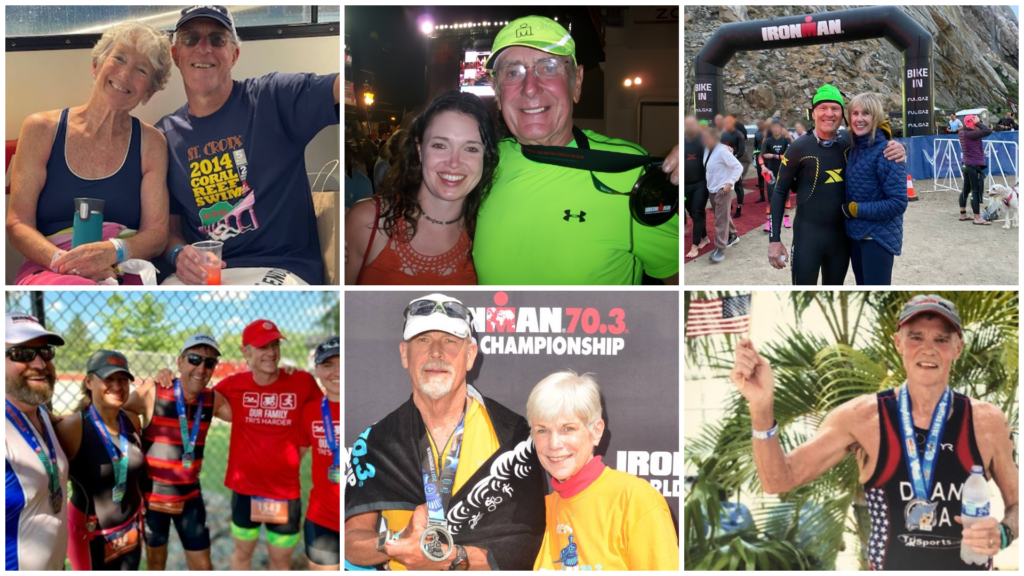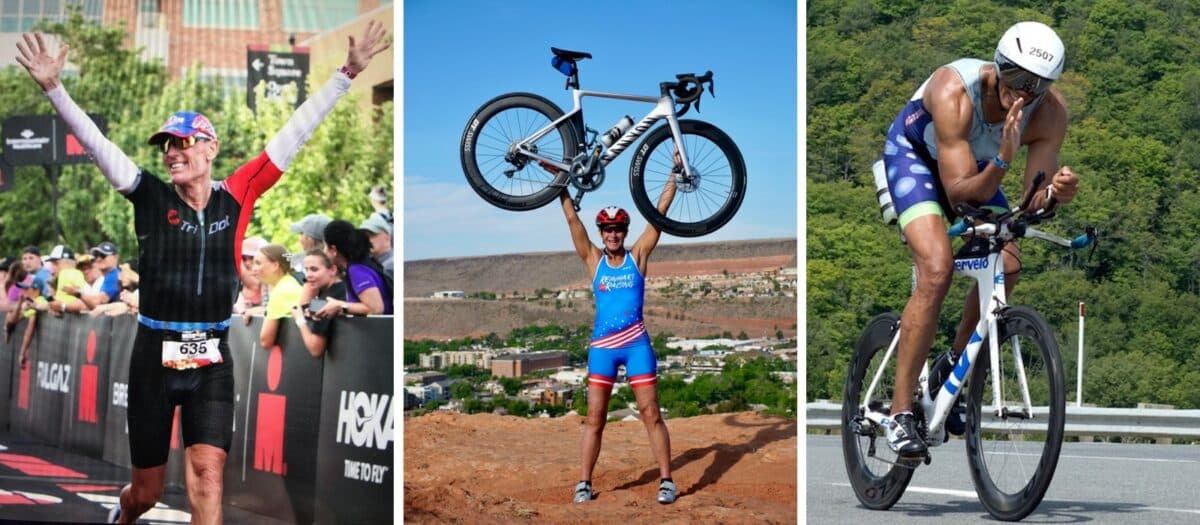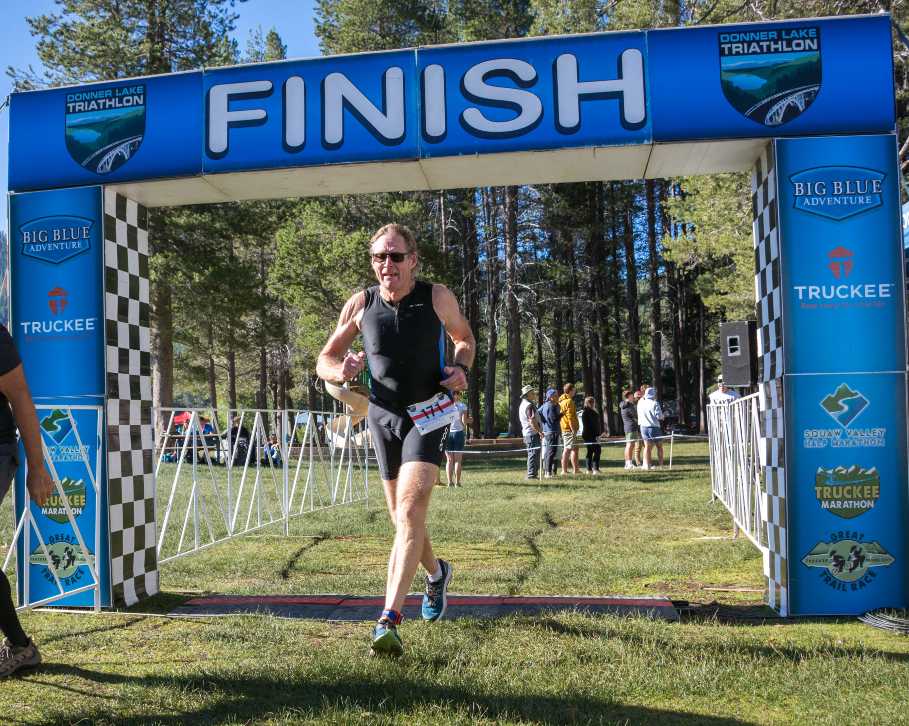We often expect some drop in running speed as we age. Still, how can we minimize it? This post is based on TriDot coach Kurt Madden’s response to a request from a senior triathlete in his late 60s who hopes to reverse a dramatic drop in his running performance.
How Can I Reverse a Drop in Running Performance?
David, one of our community of senior triathletes, sent me the following request.
“I’m looking for some articles and guidance on nutrition for senior triathletes. I’m going to be 69 in July and my endurance has dropped dramatically in the past 4 years. The run has been the most affected. I expect age related drops but have gone from an 8:45 [minute per mile] pace to an 11:45 [minute per mile] pace on the run after bike.”
I sent David’s request to Our Coaches, and asked them to share the most common causes for drops in performance they see among older athletes. Kurt Madden, a TriDot Certified Coach and Head of Coach Development for TriDot, offered to speak with me about what he sees. Kurt’s comments are the basis for the rest of this post.
Protein-Based Diet
According to Coach Madden, David is correct in asking about nutrition when wanting to recover his earlier running performance.
To begin with, any person in training should be “building their nutritional regimen around protein”. This can include lean protein and any combination of protein-containing foods that provide all essential amino acids. Such a diet can slow aging somewhat. How?
Kurt said, “Fifty percent of the cellular membrane is protein. Generally speaking, for males and for females, as we look at current data, any person who is active, including seniors, should strive for close to one gram of protein per pound of body weight.” This is equivalent to 2.2 grams of protein per kilogram of body weight, higher than general recommendations for older active adults.
A common mistake of athletes in training is, according to Kurt, “protein fasting”. Protein fasting occurs when the athlete does not consume the recommended amount of protein. It also occurs when protein is not consumed throughout the day. We can’t starve ourselves of protein for sixteen hours, then cram it in at the end of the day. This is because it takes time for our bodies to absorb the protein we consume.
According to an article titled The Science Behind Intermittent Fasting For Athletes, “Your protein absorption rate may be as low as 8-10 grams per hour. Intermittent fasting limits one’s ability to spread protein intake throughout the day. This may not be a problem if your protein needs fit effectively within an 8-hour eating window. But if you have extremely high protein needs (say, you’re training for a triathlon and spend 3+ hours/day training) you may need to supplement with protein even during a fasting period.”
What About Intermittent Fasting?
I asked Kurt about intermittent fasting, considering this advice. From his response, I learned that while intermittent fasting may help with weight loss, the athlete in training who employs this approach may give up the quality of cellular development and quality of their metabolism. “If we can build in protein throughout the day, our waking hours, we are going to help build the cell membranes and help with recovery. To me, that is a huge win right there.”
Not absorbing enough protein while in training is, according to Coach Madden, “like a battery pack on a flashlight. You’ve got four batteries in there, but only two are working.”
Kurt continued, “The power house of the cell, that is the mitochondria. When everything within the cell is fed, it is going to produce at a much higher level. They can get larger, they can increase in size and number at any age. That’s the importance when you look at protein.”
Athletes who do not absorb enough protein will “struggle with recovery and doing powerful things, like trying to maintain your running speed at any age, versus people that are not [protein fasting] who recover quicker, generally speaking, and not going to see that rapid decline [in running speed]. So, just that tweak there is going to be incredible.”
Twenty Different Vegetables and Fruits Each Week
In addition, Kurt said, “It’s really important to try to get twenty different fruits and vegetables every single week with a shift toward more vegetables than fruits.” While fruits provide antioxidants, they also contain more sugar than vegetables.
Kurt emphasizes the need to “be strategic in your carbohydrate intake. Ideally you are getting complex carbohydrates versus simple sugars. And you are doing it strategically so every day in your training you know that if you are training less than an hour, you don’t need a surplus of carbohydrates. Conversely, if you are in a longer session any day of the week, if it’s a two hour bike ride and a thirty-minute run, you definitely need to shift those carbohydrates over.”
How Clean Are You Eating?
“And then the thing that I find with people who struggle a little with their weight, when I see a ratio of protein to carbohydrates, it’s not one to one or it’s not one to two. It’s like one for protein and four for carbohydrates. And many times what goes into that mix, when you really peel the onion back, is that their percentage of processed foods is much larger. Processed food will slow down your recovery.”
Following these guidelines will slow age-related performance decline for everyone, including seniors.
Related post: What Masters Athletes Need To Know About Nutrition
Building Strength and Endurance Reverses a Drop in Running Performance
Another area in which we can affect age-related performance is training. Kurt began this part of our discussion by referring to a May 14, 2024 article in Triathlete magazine titled How Much Slower Will You Get As You “Age Up” in Triathlon?. This article documents slower Ironman 70.3 run times that begin in our late 20s or early 30s and progress with age.
While the article mentions five main reasons for age-related performance declines, Kurt identified two of these for seniors to target in their training: (1) strength and (2) oxygen uptake.
“When you look at your oxygen uptake, the amount of oxygen that you can deliver to the working muscles . . . you are going to see that decline [with age]. That’s unavoidable because you are losing your strength.”
For this reason, seniors must include strength training, being careful to avoid injury. “Accept that by doing strength training, you are putting some stress on your ligaments, your tendons, your long bones, your connective tissue.” Still, he reminds seniors to remember that they are no longer in your 20s. Start slow.
Getting Uncomfortable to Get Faster
Still, beyond reduced strength, another cause for reduced oxygen uptake is our approach to training. “Typically, what we see, when you look at research, is that when people get older, they are more comfortable staying in a Zone 2, aerobic type training program. They are exercising. Hallelujah. I think that is beyond awesome. However, most people who are seniors, they are not willing to get uncomfortable. They are not doing the high intensity training.”
“It’s kind of like investing. How can I get bigger gains in my investments, and still be ethical and honest? Zone 2 is like investing in bonds. You’re not going to lose a thing. That’s awesome. If you want to be a little more ambitious, you’ve got to raise that bar again and, as we say, get into anerobic or you get things at your anerobic threshold. That is a true separation. And we see that.
“I can look at article after article about people in their sixties and seventies. It’s scary. People are running under three hour marathons. I was looking at results just last weekend for an Ironman 70.3 over on the east coast. A person that did a 70.3, they did a 1.2 mile swim, they did a 56 mile bike ride, and they ran a half marathon. They ran eight minute miles at age 65 to 69.
Add Some Good Stress
“I have to believe it could be two things. Number one, genetically, they are just flat out superior. But, secondly, I have to believe that person is doing some high intensity training because you have to stimulate your cardiovascular system. You have to put a little bit of stress on it and know you also need to back off.
“And that’s the beauty of TriDot. I work with 80 year olds, 70 year olds, 60 year olds, 50 year olds. I’m 68. I know later today, I have a session on a bike for an hour and I have got to get twenty-one minutes at Zone 4. And I know that I am going to get bigger gains or be able to maintain my oxygen uptake when I do that.
“Same thing on the run and the swim. But when we go to David’s question about the run, that’s very typical. We ask, well why does that happen? Well, I think to be very candid, running is the most stressful of all three disciplines. Because, you’ve got gravity. You’ve got force. You’ve got this person pounding on their ligaments, tendons, musculature, and connective tissue. And we see most injuries happening through running. And many times, it’s the volume of running, it’s overuse of running.
Balancing and Optimizing Stress
“And, again, when you see that decline, mostly speaking, I have to look at this person’s training program. They need to run at Zone 4 and Zone 3, not excessively, but have something that is optimizing them. Why? Because again, your body is going to get used to performing at that level. That prevents the decline they are going to see.
Kurt continued, “In swimming . . as long as your range of motion is good, you have the buoyancy factor. On the bike, you’re not pounding. If you’re disciplined, have good strength, good balance, mental toughness, you can hang on.”
“I just know, I did a max VO2 on the bike two weeks ago. It was close to what I did thirty years ago.”
Rest & Recovery For Better Running Performance
“Every person is a little different in the rest and recovery they need.
“Many times when we see [an athlete’s] performance declining, we get right to sleep factor. Shut things off so they are no longer getting blue light coming off screens fifteen hours a day. They shut things off and get the quality of sleep and recovery.”
Related post: Rest and Recovery: Why It’s Important for Senior Triathletes
Running Performance: A Three-Legged Stool
Just as a three-legged stool or tripod is the most stable platform, so is a training approach that considers the three principal contributors to running performance. Whether training for running or the triathlon run, a comprehensive plan will address these three legs:
Of the three sports of triathlon, running is the one most sensitive to proper balance of these.
Do you want a review of your current training plan or a plan tailored to you? Contact Kurt or one of Our Coaches.
Comments: Please note that I review all comments before they are posted. You will be notified by email when your comment is approved. Even if you do not submit a comment, you may subscribe to be notified when a comment is published.
Other Contributions By Coach Madden
Since our affiliation with TriDot began nearly a year and a half ago, Kurt Madden has helped on several Senior Triathletes posts. He is the exclusive contributor to these two:
Leveraging TriDot to Optimize Your Training at Any Age
How To Make Triathlon Training Senior-Specific
Kurt has also regularly responded to questions raised by readers in the Ask Our Coaches series.




